Mar 20, 2025
Author:Lisa Martinez

Every dog, no matter what their age or breed, suffers from yeast infections that represent a common health issue. These bothersome infections develop on skin and ear surfaces due to excessive yeast fungi growth that normally exists harmlessly.
The presence of irritated skin together with itchy ears and foul odors indicates yeast overgrowth that causes serious discomfort to dogs. Pet owners need to identify the origins of dog yeast infections together with their diagnostic signs because this knowledge helps them choose proper treatment options.
This guide provides step-by-step training for dog owners who wish for the treatment of dog yeast infections. This guide contains complete yeast infection information through explanations of yeast infection nature and causes and symptoms alongside diagnostic approaches and treatment choices and prevention methods.
The accumulation and overpopulation of Candida or Malassezia fungi on dog skin creates what medical professionals call “yeast dermatitis.” The skin of dogs naturally carries these yeasts at normal quantities which do not create problems. The presence of yeast at appropriate levels is completely normal for dogs. The uncontrolled growth of these fungi leads to problems that become evident to the observer.
Cutaneous yeast dermatitis stands as the medical name for the bothersome skin infections where yeast proliferates excessively on dog skin tissue. Yeast infections affect mucocutaneous tissues including a dog's mouth and genitals and digestive system although they are less frequent than skin yeast infections.
The most common areas for yeast overgrowth are skin folds together with paw pads and underarm and groin regions and specifically the ears of dogs with floppy ears. The sensitive skin regions create ideal moist dark areas which yeast fungi thrive to feed on. The ears represent the most vulnerable areas for yeast infections to develop in dogs. A yeast infection in the ear canal of dogs is medically known as “otitis externa.”
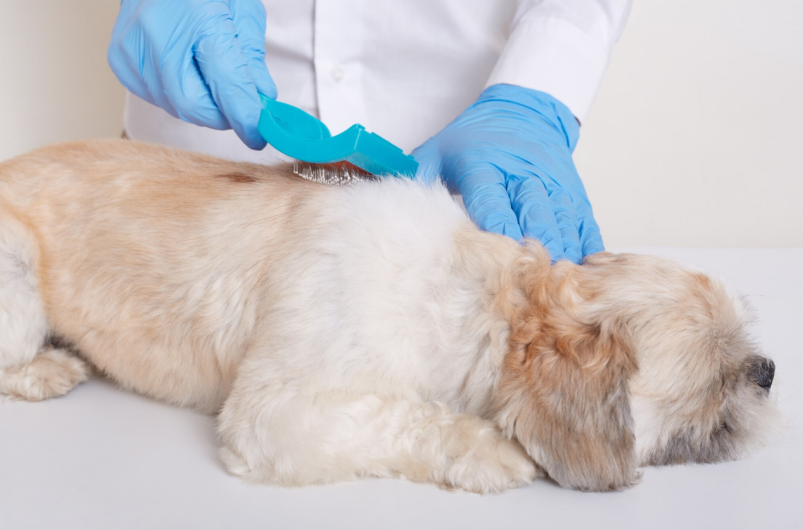
How can we determine if our dog requires yeast infection treatment among all possible root causes? The main indicator of yeast infection detection involves identifying specific visible symptoms together with unusual behaviors and detecting the particular yeasty odor. Dog parents who identify problems early can start the diagnostic process to obtain prompt treatment for their dogs.
Your dog shows these symptoms when yeast infection affects them:
The skin develops visible swelling and redness together with greasiness because yeast produces lipids that collect on the surface. The infection leads to the formation of both scaly skin areas and crusty patches. The skin surface sometimes turns darker while displaying black spots or a whitish-pink discoloration. The presence of yellowish or brownish gunk in skin folds along with ear goop serves as a clear sign of yeast overgrowth.
The discomfort of itchy skin makes dogs resort to biting, licking and intense scratching of their infected areas to find relief. The accumulation of yeast becomes particularly problematic in ear spaces which leads dogs to shake their heads often. The continuous licking or chewing of bright red paws indicates a potential yeast infection. Watch your dog carefully to detect any abnormal scratching patterns.
A yeast infection in dogs becomes evident through the characteristic yeasty smell that comes from their skin or ears or feet. The sickly sweet odor of baking bread or beer helps differentiate fungal infections from bacterial infections because it creates an overpowering smell. A foul odor should trigger an inspection regardless of whether other symptoms have not become apparent. Do not dismiss altered body or breath odors.
Yeast infections that go untreated will inevitably become worse as time progresses. As infections progress, symptoms intensify. The progression of yeast infections leads to severe hair loss and skin thickening and persistent infections. When yeast infections persist it indicates an underlying health condition that allows yeast to keep coming back. Early detection of yeast stops the destructive cycle of suffering.
Your dog's yeast infection stays hard to treat yet causes discomfort so medical intervention shortens recovery time. Veterinary-prescribed medications form part of the available treatment options which also include natural remedies and dietary modifications for preventing future yeast infections.
Take your dog to a veterinarian for yeast infection treatment if the condition is severe or if natural remedies do not work. Veterinary professionals provide antifungal medications for oral use and medicated shampoos and topical treatments which effectively treat yeast infections.
Veterinarians choose oral antifungal drugs ketoconazole, fluconazole and itraconazole as their primary treatment for yeast overgrowth in dogs. The medications stop yeast growth to allow the immune system to recover its regular functioning. Veterinary supervision is necessary for medical yeast infection drugs since these medications can cause unwanted side effects.
Shampoos containing chlorhexidine miconazole and ketoconazole serve as effective antifungal medications for treating yeast infections. Your dog requires medicated shampoo baths for its skin condition which should be administered two to three times weekly. Antifungal wipes provide localized infection treatment and they function best on ears and paws and skin folds.
Medical antifungal creams and ointments and sprays with clotrimazole or miconazole serve as the necessary treatment for yeast infections and need external application. Prescription sprays and gels exist for treating infection sites which are difficult to access including the spaces between toes and inside the ears.
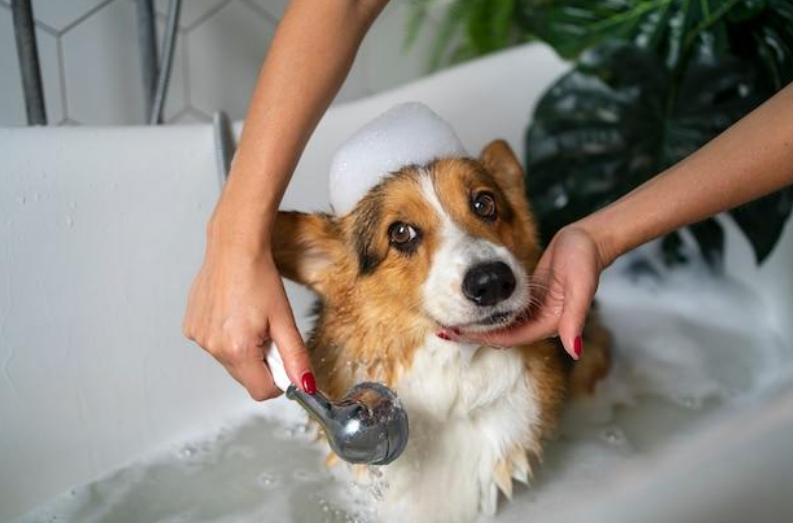
Home remedies provide natural and effective methods to control yeast overgrowth in dogs when the infection is mild or in its early stages. You must seek veterinary approval for any home treatment you plan to use for your pet because their safety needs verification.
Apple cider vinegar (ACV) contains antifungal properties which function as natural yeast infection treatment for dogs. The solution requires mixing equal parts of apple cider vinegar with water before using it as a spray or rinse on infected skin areas. The solution has dual functions because it controls skin pH levels while controlling yeast population growth. The application of apple cider vinegar should never be used on damaged skin because it produces discomfort and burning sensations.
The antifungal and antibacterial properties found in coconut oil make this substance an excellent treatment choice for yeast infections in dogs. The regular application of coconut oil twice per day to yeast-infected areas helps fight yeast growth and reduces inflammation and controls itchiness. The immune system of your dog will receive coconut oil benefits through their food while the body fights yeast infections internally.
The recognized healing and calming properties of Aloe vera establish it as an efficient remedy for yeast infections in dogs. Aloe vera gel in its pure form applied to affected skin areas multiple times daily will help minimize itching and reduce inflammation. The use of aloe vera products for dogs requires toxic-free additives because ingestion of these products can be dangerous to dogs.
The antifungal compound carvacrol in oregano oil functions as an effective treatment for eliminating yeast infections in dogs. The safe application of oregano oil requires mixing one drop of oil with a teaspoon of coconut oil and then applying it to the infected area. The diluted oregano oil solution protects dog skin from irritation yet maintains its antifungal effectiveness. The strong potency of oregano oil requires veterinary supervision before administration through any internal route.
Feeding your dog the right food at the right time is just as important as choosing the right ingredients. WOpet Heritage View Automatic Pet Feeder helps pet owners stick to a steady feeding schedule, promoting better digestion and immune function.

Dogs who experience yeast infection problems need to eat a diet that consists of low-carbohydrate foods which exclude grains. The elimination of rice corn and potatoes and starches and sugars from dietary foods is necessary to prevent yeast multiplication. A diet rich in protein yet low in carbohydrates supports healthy gut bacterial levels that decrease the chances of yeast infections returning.
Any dietary strategy against yeast infection needs to include probiotics as essential elements. The beneficial bacteria in your gut grow stronger after you introduce probiotics because these beneficial bacteria take the same space and nutrients that yeast uses. You can prevent yeast overgrowth by taking probiotics either through dietary supplements or by eating plain yogurt.
The natural sugars in sweet potatoes along with carrots and peas raise blood sugar levels that create an environment where yeast can grow. The restriction of starchy vegetables benefits your dog's health by helping to control yeast infections.
As a dog parent, you must make comfort and quality of life your top priorities for your pet. Yeast infections create major health problems that negatively affect your dog's well-being. By being attentive to prevention methods and providing quick treatment during infections we can effectively control these nuisances.
Support your dog’s health by maintaining a consistent feeding schedule. With WOpet’s automatic pet feeders, you can ensure your pet gets properly timed meals.
Label:
Popular Post
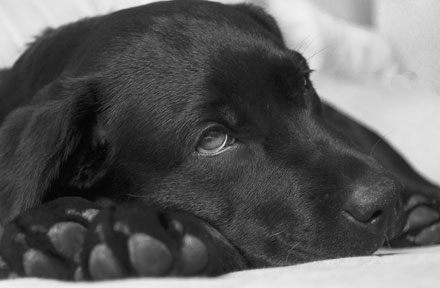
What to Feed a Sick Dog With No Appetite? [2025 Guide]
May 16, 2023
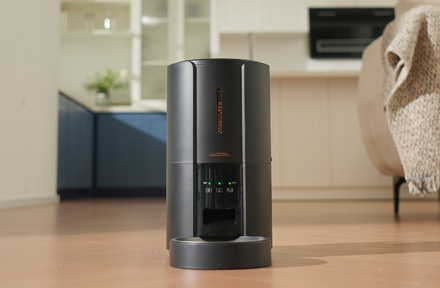
Troubleshooting Common Issues with Automatic Pet Feeders: Tips & Tricks for Pet Owners
Oct 26, 2023

Why Does My Cat Cough After Drinking Water? 8 Potential Reasons
Mar 13, 2023
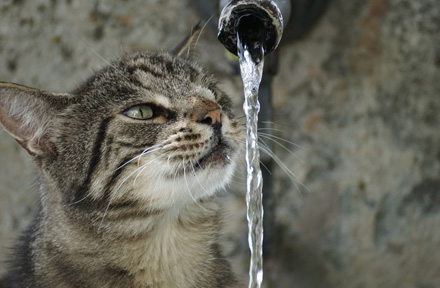
Why is My Cat Throwing up Water? Top 5 Causes Here
Feb 08, 2023

My Cat Only Eats A Little at A Time - What to Do?
Feb 27, 2023
$99.99
$129.99
Copyright © 2025 WOPET. All Rights Reserved.